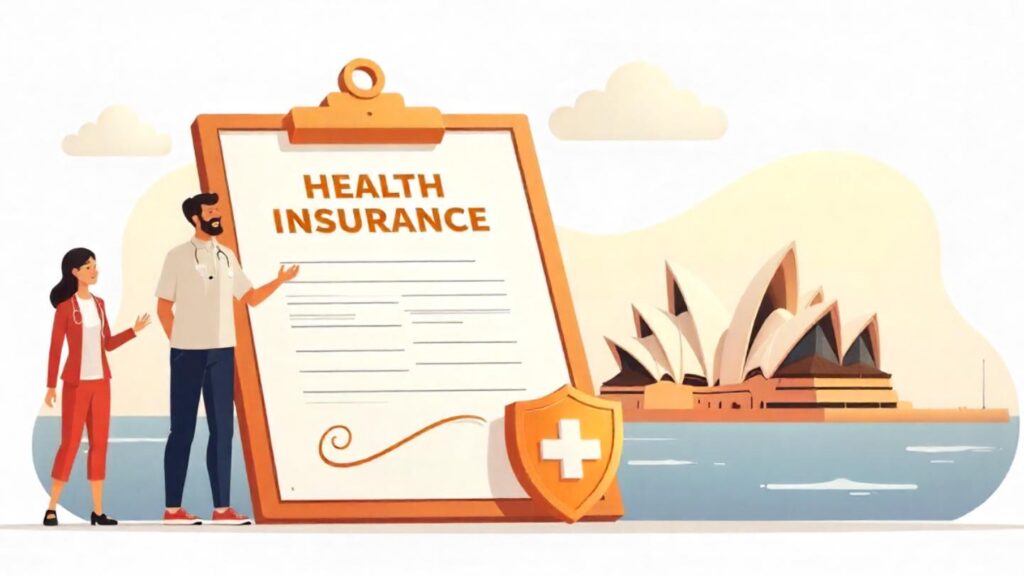- Overview of the Armenian Healthcare System
- Public Health Insurance in Armenia
- Private Health Insurance in Armenia
- Health Insurance for Expats and Visitors in Armenia
- Upcoming Reform: Mandatory Health Insurance in 2026
- Key Challenges in the Armenian Health System
- Tips for Choosing the Right Health Insurance in Armenia
- Conclusion
- Frequently Asked Questions
Understanding health insurance in Armenia is essential for locals, expats, and travelers alike. Access to quality healthcare and financial protection depends on having the right coverage in place. Without it, medical costs can quickly become overwhelming.
Armenia’s healthcare system combines public services with private options. While public coverage offers basic care, many residents still pay most healthcare expenses out-of-pocket. This hybrid model affects how people access and afford medical treatment.
A major change is coming with the mandatory health insurance reform planned for 2026. This reform aims to expand coverage and improve healthcare access for all residents in Armenia.
Overview of the Armenian Healthcare System
Armenia’s healthcare system features a hybrid structure that combines both public and private sectors. The public system offers basic medical services through a government-funded program, while private providers deliver more specialized and comprehensive care.
Currently, the majority of healthcare expenses in Armenia are paid out-of-pocket by patients, with estimates indicating that approximately 85 percent of medical costs are covered directly by individuals. This high level of out-of-pocket spending places a significant financial burden on many families.
The government provides a Basic Benefits Package, which includes essential services such as emergency care, primary healthcare, maternity support, and vaccinations. However, the package excludes many specialist treatments, advanced diagnostics, and long-term care services, often requiring patients to seek private care or pay additional fees.
Recognizing these gaps, Armenia is actively transitioning toward universal health coverage. The planned reforms aim to expand access to affordable healthcare, reduce out-of-pocket payments, and improve the quality and equity of services throughout the country.
Public Health Insurance in Armenia
Armenia’s public health insurance system operates through a Basic Benefits Package (BBP) designed to provide essential medical services for citizens and certain eligible groups. While the system aims to ensure basic access, significant out-of-pocket expenses remain a concern for many households.
Who Is Covered Under the BBP?
The Basic Benefits Package primarily covers vulnerable populations such as:
- Children under 18
- Pregnant women
- People with disabilities
- Military personnel and veterans
- Socially disadvantaged individuals
- Those with certain chronic conditions
Employed individuals may also receive partial public coverage depending on their income level and employer contributions. However, for much of the general population, the package offers only limited financial protection, often requiring patients to cover additional medical costs.
Types of Services Included
The BBP includes a limited set of medical services. These typically cover:
- Emergency care at state-approved facilities
- Primary care services, including general consultations
- Maternity and childbirth support, including prenatal check-ups
- Vaccinations as part of national immunization programs
- Screening and treatment for specific infectious and chronic diseases
- Basic diagnostic tests, when medically indicated
Specialist consultations, advanced diagnostics, surgeries, and long-term care are often not fully covered, leading many patients to seek private care or pay out-of-pocket.
How to Access Public Healthcare Services
To access care under the BBP, individuals must visit public or state-contracted healthcare facilities. Patients are typically required to present a valid national ID and, if applicable, proof of eligibility for subsidized care.
The referral system plays a key role in public healthcare access. Patients usually need a referral from a primary care doctor to consult a specialist or receive hospital care under the public scheme. Some services are available without referral in urgent cases, but capacity is often limited in rural areas.
Government Healthcare Spending
Public healthcare in Armenia is underfunded compared to global standards. Government spending accounts for approximately 1.5 percent of the country’s gross domestic product (GDP). This figure falls well below the World Health Organization’s recommendation of 3 to 4 percent for developing nations.
As a result, public facilities often face shortages in staff, equipment, and medication. This underinvestment has contributed to the rise of informal payments and a growing dependence on private healthcare providers, even among those nominally covered by public programs.
Private Health Insurance in Armenia
Private health insurance in Armenia offers an alternative to the public system, providing wider coverage and faster access to medical services. Several companies operate in this market, with the most prominent being INGO Armenia, SIL Insurance, and Rosgosstrakh Armenia. These insurers cater to individuals, families, and businesses seeking more comprehensive health plans.
What Private Insurance Typically Covers
Private health insurance plans in Armenia generally cover a broad range of medical services that go beyond the public Basic Benefits Package. Coverage often includes:
- Specialist consultations without the need for referrals
- Hospitalization, surgeries, and advanced diagnostic tests
- Prescription medications and outpatient treatments
- Dental care and vision services, depending on the plan
- Emergency medical evacuation and international coverage for some policies
Many private plans offer additional perks such as access to private clinics, shorter waiting times, and personalized care coordination.
Pros and Cons Compared to Public Healthcare
Choosing private insurance has clear advantages, including more comprehensive service coverage, greater convenience, and better quality facilities. Patients with private insurance usually avoid long waiting lists and can select preferred doctors or hospitals.
However, private insurance comes with higher costs and may require careful review of policy details to avoid unexpected exclusions or limits. Some plans have restrictions on pre-existing conditions or age limits, and not all private facilities maintain the same quality standards.
On the other hand, public healthcare is more affordable or free at the point of service for many but tends to offer limited coverage, longer wait times, and variable quality, especially outside major cities.
Cost Ranges for Private Policies
The price of private health insurance in Armenia varies based on coverage level, age, and insurer. Monthly premiums typically range from about 10,000 to 50,000 Armenian drams. More comprehensive plans with extensive benefits and international coverage can cost significantly more.
For families, insurers often provide group plans that reduce individual costs. It is important to compare what each plan covers versus the premium to ensure the best value.
How to Compare and Choose Plans
When selecting a private health insurance policy, consider the following steps:
- Review the list of covered medical services and facilities
- Check if your preferred doctors or hospitals are in the provider network
- Understand any exclusions, waiting periods, or coverage limits
- Compare premium costs relative to the benefits offered
- Ask about claim procedures and customer service support
- Verify if international travel or evacuation coverage is included or available as an add-on
Careful comparison helps avoid surprises and ensures the plan matches your healthcare needs and budget.
Health Insurance for Expats and Visitors in Armenia
Health insurance is mandatory for expatriates living in Armenia. Whether you are relocating for work, study, or other reasons, having adequate coverage is a legal requirement and essential for accessing quality healthcare services.
Insurance Requirements for Visa and Residence
When applying for a visa or residency permit, foreign nationals must provide proof of valid health insurance. This coverage should meet minimum standards set by Armenian authorities to ensure access to medical care during the stay.
Many expats choose private insurance plans that offer comprehensive coverage tailored to their needs, as public health insurance may not fully cover foreigners.
Recommended Insurance Plans for Foreigners
Foreign residents often select international or local private health insurance policies designed specifically for expats. These plans typically cover hospital stays, specialist visits, outpatient treatments, and emergency services. Some providers also include coverage for repatriation or medical evacuation, which is crucial in case of serious illness or injury.
When choosing a plan, consider options that provide access to English-speaking doctors and modern medical facilities in Armenia. Plans with flexible coverage limits and options for family members are also beneficial.
Emergency Medical Evacuation Advice
Medical evacuation, or MEDEVAC, is an important consideration for expats in Armenia. Advanced medical care for certain emergencies may require transportation to another country, especially if specialized treatment is unavailable locally.
Many expat health insurance plans include MEDEVAC coverage or offer it as an optional add-on. Having this protection can reduce financial and logistical burdens in critical situations.
Why Travel Insurance Is Essential
For short-term visitors or tourists, travel insurance is essential to cover unexpected health issues or accidents during their stay. Travel insurance typically includes emergency medical care, hospitalization, and sometimes trip cancellation protection. Since public healthcare access for foreigners can be limited, travel insurance offers peace of mind and financial security.
Upcoming Reform: Mandatory Health Insurance in 2026
Armenia is preparing to implement a universal health insurance system aimed at improving access to quality healthcare for all residents. The purpose of this reform is to reduce the high out-of-pocket expenses currently faced by many Armenians and to ensure more equitable health coverage across the population.
Annual Premium Estimate
The planned mandatory health insurance will require an annual premium payment of approximately 164,400 Armenian drams. This amount will be collected from individuals and employers to fund the expanded health coverage. The government aims to make this premium affordable while increasing the overall healthcare budget.
Subsidy Model Based on Income
To support vulnerable groups and low-income households, the reform includes a tiered subsidy system. Low-income earners could receive up to a 60 percent subsidy on their premiums, while middle-income groups may qualify for a 40 percent discount.
Additionally, family members of insured individuals may receive a 20 percent subsidy to help cover their costs. This structure aims to make health insurance accessible to a wider range of people.
Implementation Timeline
The reform will roll out in phases:
- From 2024 to 2026, a pilot phase will test the system in selected regions and population groups.
- Full nationwide implementation is scheduled for 2027, when health insurance will become mandatory for all residents.
This phased approach allows policymakers to adjust the program based on feedback and operational challenges.
Public Concerns and Government Response
Despite the potential benefits, some concerns have arisen among the public. These include questions about the affordability of premiums, the quality of services covered, and the administrative capacity to manage a universal system.
The government has responded by promising transparency in premium collection, clear communication of benefits, and ongoing monitoring to ensure the program meets its goals.
Overall, the mandatory health insurance reform represents a significant shift in Armenia’s healthcare landscape, aiming to provide better financial protection and health outcomes for the entire population.
Key Challenges in the Armenian Health System
Armenia’s healthcare system faces several significant challenges that affect the quality and accessibility of medical services for its population.
Underfunding
Government spending on healthcare remains low, accounting for only about 1.5 percent of the country’s gross domestic product. This underfunding limits the ability of public facilities to invest in modern equipment, maintain infrastructure, and offer competitive salaries to medical staff.
Uneven Access in Rural Areas
Access to healthcare is uneven across Armenia, with rural communities experiencing fewer medical resources and facilities. Many rural areas lack specialized doctors and essential services, forcing residents to travel to urban centers for treatment, which can delay care and increase costs.
Price Mismatch Between Hospital Costs and State Subsidies
There is a growing gap between the actual costs charged by hospitals and the subsidies provided by the government. Many hospitals set fees that exceed state reimbursement rates, causing patients to pay out-of-pocket for services that should be covered. This discrepancy creates financial strain, especially for low-income individuals.
Lack of Trained Healthcare Professionals
Armenia struggles with a shortage of trained healthcare workers, including doctors, nurses, and specialists. Brain drain, where qualified professionals seek opportunities abroad, further exacerbates this issue. This shortage impacts the quality of care and the capacity of the system to meet patient needs.
Access Difficulties for Vulnerable Groups
Certain populations, such as refugees, disabled persons, and socially disadvantaged individuals, face barriers when trying to access healthcare services. These groups may encounter discrimination, lack of information, or logistical challenges, leading to unmet health needs and poorer outcomes.
Tips for Choosing the Right Health Insurance in Armenia
Choosing the right health insurance plan in Armenia can be challenging given the variety of public and private options available. To make an informed decision, it helps to understand how to compare plans and what questions to ask before enrolling.
How to Compare Public and Private Plans
Public health insurance provides basic coverage and is often more affordable or free for eligible groups. However, its scope is limited, with long wait times and fewer options for specialists. Private insurance, while more expensive, usually offers wider coverage, shorter wait times, and access to private facilities.
When comparing plans, evaluate the types of services covered, network of providers, claim procedures, and overall costs. Consider your healthcare needs and financial situation to decide which option fits best.
Questions to Ask Your Insurer Before Enrolling
Before committing to a policy, ask your insurer about:
- Which medical services and treatments are covered
- Coverage limits and any deductibles or copayments
- Procedures for filing claims and reimbursement timelines
- Whether pre-existing conditions are covered
- Policy duration and renewal terms
Clear answers help prevent surprises later.
Common Exclusions and Hidden Fees
Some plans exclude certain treatments such as cosmetic procedures or alternative medicine. Others may not cover medications or limit coverage for chronic conditions. Be aware of potential hidden fees, including administrative charges or penalties for late payments.
Reading the policy details carefully and requesting clarifications can save you from unexpected expenses.
Where to Find English-Speaking Doctors
For expats and foreigners, finding English-speaking doctors is essential. Many private clinics and hospitals in Yerevan and other major cities have multilingual staff. Check with your insurer for a list of affiliated providers who offer services in English to ensure smooth communication during medical visits.
Importance of Reviewing Provider Networks
Insurance plans typically have a network of approved hospitals, clinics, and specialists. Staying within this network often results in lower costs and easier claims processing. Verify that your preferred healthcare providers are included in the network before choosing a plan. This step helps avoid higher out-of-pocket expenses for out-of-network care.
Conclusion
Armenia’s healthcare system currently relies on a combination of public and private services, with many people paying out-of-pocket for medical care. The upcoming mandatory health insurance reform set for full implementation in 2027 aims to expand coverage and reduce financial burdens.
This significant change will require all residents to have health insurance, supported by a subsidy model to help make premiums more affordable.
Even though the new system is not mandatory yet, having health insurance now is important to protect yourself from unexpected medical costs. Private insurance can offer better access and broader coverage than public options. Planning ahead allows you to make informed choices and avoid gaps in care during the transition.
Stay informed about policy updates and consider your healthcare needs carefully. Being proactive about health insurance can provide peace of mind and financial security in Armenia’s evolving healthcare landscape.
Frequently Asked Questions
Is health insurance mandatory in Armenia?
As of now, health insurance is not mandatory for all residents in Armenia. However, a universal mandatory health insurance system is planned to be fully implemented by 2027. This new system will require all residents to have health insurance coverage.
How much does health insurance cost in Armenia?
The cost varies depending on the type of insurance. Public health insurance through the Basic Benefits Package is either free or subsidized for eligible groups. Private insurance premiums typically range from 10,000 to 50,000 Armenian drams per month, depending on coverage levels. The upcoming mandatory insurance system will set an annual premium around 164,400 drams, with subsidies for low- and middle-income earners.
Can tourists access Armenian healthcare?
Tourists can access healthcare services in Armenia but are generally required to pay out-of-pocket unless they have valid travel insurance. Travel insurance is highly recommended for visitors to cover emergency medical care and other unexpected health needs.
Which is better: public or private insurance?
Public insurance offers basic coverage at low or no cost but often involves longer wait times and limited access to specialists. Private insurance provides more comprehensive coverage, quicker access to care, and choice of providers, but it comes at a higher price. The best option depends on individual healthcare needs and budget.
What happens if I don’t have health insurance in 2026?
When the mandatory health insurance system launches fully in 2027, all residents will be required to have coverage. Failing to enroll could result in penalties or restrictions on accessing certain public services. It is advisable to stay informed and prepare for the transition to avoid any gaps in coverage.



